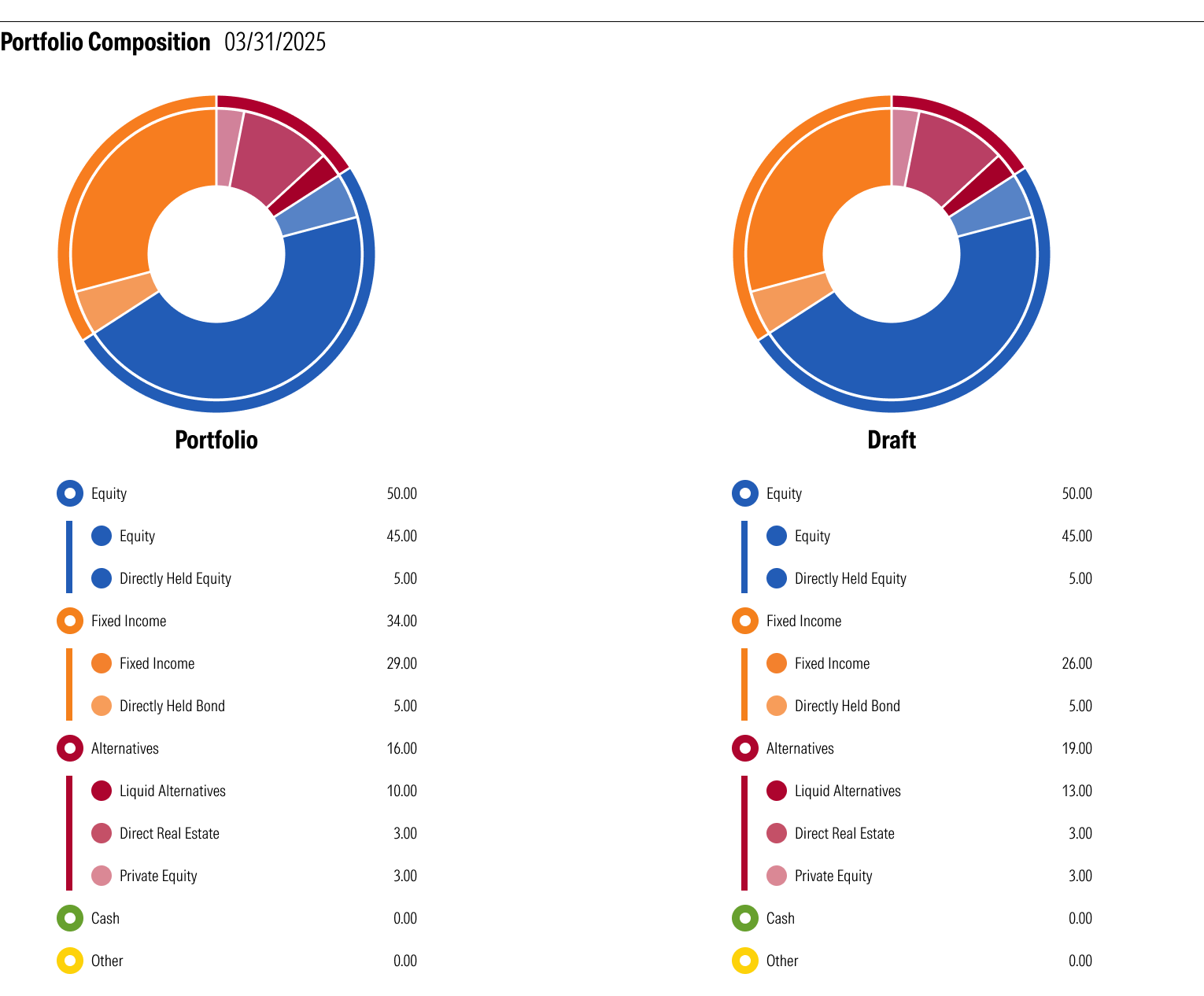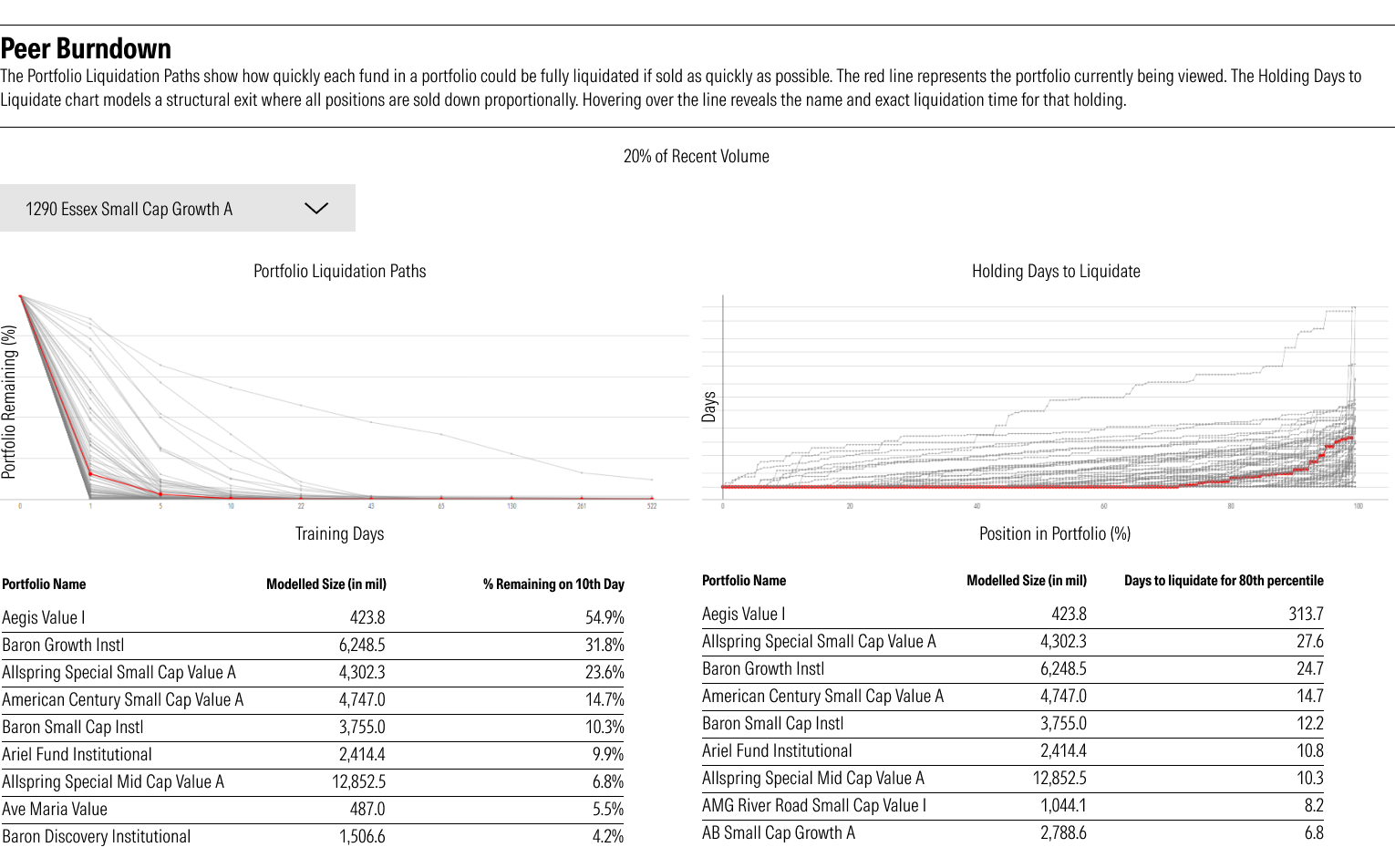5 min read
Transparency in Private Markets: Empowering Investor Success

On this page
On this page
On this page
On this page
Over the past decade, the convergence of public and private markets has been pushing investors into new territory. With private investments now accessible to a broader range of investors, the demand for transparent, data-driven insights has never been higher—and the need for transparency and analytical tools is critical.
Decades of Morningstar research has shown that the better individuals understand their investment portfolio, the more successful they’ll be. That poses a challenge for private investments, with limited disclosures, delayed performance data, and complex structures.
One fast-growing area within the public/private convergence trend is semiliquid funds, which hold private securities but are registered with regulators and therefore are required to disclose their holdings, fees and performance. US-domiciled interval funds, a type of semiliquid offering, have grown from $2.8B to $96.2B of assets in the past decade, and more than 70 new funds have launched in the past two years.
Investors would benefit from an independent take on semiliquid funds, and I’m particularly excited about the new Morningstar Medalist Rating we recently launched for these vehicles. It’s a key time to provide the tools that advisors need to educate clients, manage risk, and build stronger portfolios.
This article will give a detailed view of how the new methodology works and how it—and other data and tools in our ecosystem—aim to drive transparency and confidence in determining which funds might be a good fit in a portfolio.
By the Numbers: Why Better Data Is the Foundation for Strong Decision-Making
For advisors to guide clients confidently through private market exposure, they need clear, comparable, and accessible data. This is especially important with private securities that lack the disclosure investors are accustomed to on the public side, including basics like valuation and likely cost.
Some asset managers offering funds with private holdings suggest these investments will deliver better returns amid lower risk. The data, however, shows mixed results. Private holdings don’t disclose daily prices, so their returns may look smoother. A recent Morningstar study found, however, that among the 14 semiliquid private equity and venture capital funds in Morningstar’s database, only three had beaten the S&P 500’s annualized return since inception through May 2025 or the latest available data.
Investors are paying handsomely for semiliquid strategies—typically two or three times higher than they’re paying for an open-end fund after incentive fees. Fee structures are complex and often include incentive fees. Private credit semiliquid funds—some of the fastest-growing strategies—almost always collect an incentive fee, even if they’ve lost money for investors.
To help investors sift through this mountain of data to determine which investments are most likely to deliver going forward, we have extended our qualitative Medalist Rating to semiliquid securities. For the first time, interval funds and other semiliquid funds will be evaluated by independent experts using a consistent, transparent framework that benchmarks performance against liquid equivalents and highlights key risks.
Spotlight on Morningstar’s New Ratings Methodology
We’re extending the Medalist rating to semiliquid funds to provide the same diligence standard that advisors, wealth platform gatekeepers and asset managers use to determine the relative strengths and potential weaknesses of more than 3,000 analyst-rated mutual funds and ETFs globally. Our Gold, Silver, Bronze, Neutral, and Negative ratings will lend clarity to interval funds and other semiliquid investments, with the goal of providing transparency and setting forward-looking expectations.
Ultimately, the Medalist Ratings for Semiliquid Funds aims to answer the question, “Is this fund worth it?” The answer depends on a fund’s likely outcomes relative to its semiliquid peers, as well as a fully liquid alternative. After all, if an investor is giving up daily liquidity, the return stream—after fees—should be compelling.
What the Methodology Aims to Do:
- Identify strategies Morningstar believes should be able to outperform a relevant public-markets equivalent index or broad private index, as well as outperform relevant peer groups.
- Call out strategies that Morningstar expects to underperform relevant peer groups.
- Work alongside Morningstar's coverage and analyses to help investors and selectors understand the suitability of strategies for an intended purpose and give clear expectations for the likely behavior of strategies in different market environments.
- Place a strategy and its vehicles in comparative and historical context in terms of criteria such as expenses, manager tenure, investment style, and asset size.
- Monitor strategies for changes that could materially affect the suitability and investment opinion.
How Morningstar Evaluates Semiliquid Funds
The Medalist Rating methodology qualitatively considers three key drivers of funds’ future performance, its Process, People, and Parent.
Process
Morningstar’s assessment of an investment process—semiliquid or otherwise—hinges on whether that strategy is run sensibly, with clearly defined objectives that can be implemented effectively on an on-going basis. Analysts are keen to understand how portfolio managers think about and manage risk through portfolio construction and security selection.
Our experienced team also makes good use of Morningstar’s global database and holdings-based analytics to compare similar strategies, though that’s more of a challenge for funds that own private securities, which lack uniform identifiers and disclosed data. Analysts look for strategies with a process distinctive enough to generate standout results in the future.
People
Next, we study the strategy’s investment team. The people managing the portfolio are key to whether the strategy delivers superior performance relative to peers and a liquid alternative. We consider who makes the key decisions on the portfolio, be that a single manager, or more often, a team. We learn how conflicts are resolved, who supports the strategy behind the scenes, and whether the leaders rely on external partners or other managers to source deals, evaluate holdings, or manage risk. Skills and experience are important, as is compensation, specifically how incentive pay influences decision-making and team stability.
Parent
Morningstar’s evaluation of and emphasis on the firm offering a strategy demonstrates our emphasis on long-term stewardship of capital. Our research has shown that parent companies that puts investors first—ahead of the firm’s shorter-term corporate interests—often deliver better long-term results. This attribute is especially important among semiliquid strategies, where investors’ redemptions are limited and therefore are making multi-year commitments to a particular strategy.
When we’re evaluating an asset manager, we consider how it recruits and retains talent and manages risk and investment capacity. Morningstar analysts prefer parents that operate within their circle of competence, charge reasonable fees, communicate candidly and transparently with investors, and treat client capital as their own. Top-scoring asset managers avoid characterizing investors as sales opportunities, offering trendy products in an attempt to gather assets, charging higher fees, and creating incentive programs that do a poor job of aligning managers’ interests with those of investors.
Consider Cost
After evaluating these three areas, analysts consider a strategy’s fees to determine whether it’s capable of outperforming its peers as well as a liquid alternative after expenses. The fee—or Price—analysis is especially important for semiliquid strategies, which typically sport higher costs that are uneven and difficult to compare. Interestingly, when private investors discuss their performance, there’s rarely a mention of cost, even though an investment’s price is the most consistent predictor of performance: The less you pay for an investment, the more likely it is to outperform—especially on a risk-adjusted basis.
The resulting Medalist Rating is expressed as:

To learn more about this new methodology, watch our recent webinar: Morningstar Medalist Rating for Semiliquid Funds: A New Framework for a Converging Market.
Answering investors’ top questions:
If I’m giving up liquidity and paying higher fees, what’s the payoff?
Our methodology evaluates semiliquid funds based on expected returns relative to public and private benchmarks.
How do I compare semiliquid investments?
Our peer group analysis places strategies in context with similar vehicles to identify potential top performers and laggards.
What if a fund is opaque?
Our independent research assesses transparency and governance risks, signaling when more due diligence may be required.
Partnering for Innovation: How PitchBook Data and Insights Will Expand Advisors’ Toolkits
The biggest hurdle to understanding and predicting a private investment’s success is transparency. Investors in public securities benefit from thorough details on companies’ financial health and growth characteristics, for example. Meanwhile public securities’ intra-day pricing gives investors a real-time scorecard that reflects those investments’ current market value. Investors in private securities have far fewer datapoints to compare, but that’s where PitchBook comes in.
PitchBook, which Morningstar acquired nearly 10 years ago, has been collecting data on private investments for decades. The firm has collected fund and security-level data from public sources, but it also forecasts and rolls up data where needed to better evaluate individual funds or broader investment objectives, like buyout or venture capital funds. For example, private funds typically report returns on a six-month lag, but PitchBook forecasts the expected returns in the meantime to lend investors real-time insights.
To help advisors assess client portfolios that hold both public and private investments, Morningstar began incorporating PitchBook’s private fund data into its software workflows in February 2025. Many of PitchBook’s private funds are now included in Morningstar’s category taxonomy so advisors can better assess clients’ private holdings alongside liquid and semiliquid funds using a familiar category structure and integrated risk metrics.
When it comes to portfolio analytics, Morningstar is also using PitchBook data to incorporate private investments into standard portfolio analytics, like Morningstar’s Portfolio Risk Score. This tool aims to make it easy for an advisor to show clients how the addition—or subtraction—of a private asset helps match a portfolio to the investor’s tolerance for risk. Morningstar Portfolio Risk Score also calls out liquidity risk, to highlight for investors that a portion of their portfolio isn’t immediately accessible.
While PitchBook data is coming to Morningstar, the reverse is also true. PitchBook clients, such as the general partners creating private investment portfolios, need more insights into the semiliquid investments designed for the retail market. To meet that demand, Morningstar is integrating its semiliquid fund data and research into PitchBook’s software platform. PitchBook subscribers will soon have access to interval fund data, for example, and PitchBook’s index designers are using that data to build a benchmark that aggregates those semiliquid investments’ performance over time.
Ultimately, the common language and tools that Morningstar and PitchBook develop to evaluate public and private investments will boost advisors’ understanding of the vehicles, fostering confidence that their recommendations will support clients’ long-term investment goals and tolerance for risk.
The Advisor’s Advantage in a Converging World
The convergence of public and private markets creates new opportunities for advisors who understand the merits – and potential risks – of semiliquid and fully private investments.
Advisors who invest in understanding private markets today will be better equipped for the complexities of tomorrow.
Elevating client education
Those who focus on explaining a fund’s strategy, its risk and liquidity profiles, and costs are setting a new standard for client trust, elevating their role as thought leaders and increasing the likelihood that clients will stay the course and reach their long-term goals.
Building trust through analytics
The Morningstar Medalist Rating for Semiliquid Funds provides a framework for assessing interval funds and other strategies where redemptions are limited. Advisors can use the ratings and reports to build a knowledge base and assess these investments with confidence—enabling deeper, data-backed conversations that resonate with clients.


Note: The portfolio composition capability is a visual representation of Morningstar's data and analytics methodology update. The Liquidity Comparison Tool is available in Morningstar Direct.
Empowering Investor Success
Morningstar’s goal is to provide research and insights that tip the odds of success in the investor’s favor. To best bridge public and private markets, we’re building a data and research ecosystem that aims to bring the same transparency and accountability that investors expect for liquid strategies that own public securities.
Transparency First, Then Innovation
As access to private market investments continues to expand, the real opportunity lies in building transparency and trust alongside it. For asset managers, having clear, comparable insights into these markets can make all the difference in strengthening client relationships.
Transparent methodologies that bring clarity to semiliquid funds help approach these investments with the same confidence as traditional markets—enabling deeper, data-backed conversations that resonate with clients.
While innovative tools and AI-driven insights are shaping the horizon, their true value will emerge when paired with the right methodologies and data quality. It’s not just about leveraging new technology; it’s about using that technology to enhance clarity and deepen understanding.
The goal at Morningstar is to empower investors by bridging public and private markets with clarity and reliable data. We aim to help bridge today’s private and public market gap while continuing to build a product ecosystem that expands with innovation—but leads with transparency.
To learn more about this new methodology, watch our recent webinar: Morningstar Medalist Rating for Semiliquid Funds: A New Framework for a Converging Market


